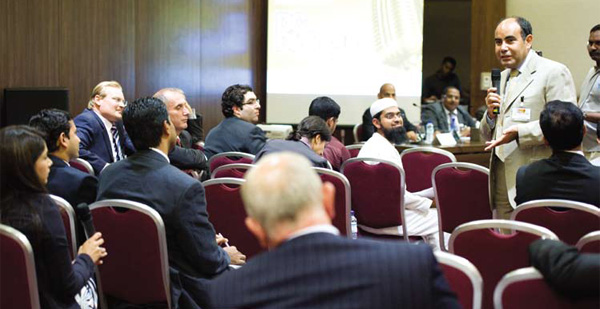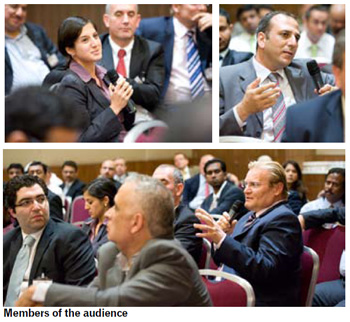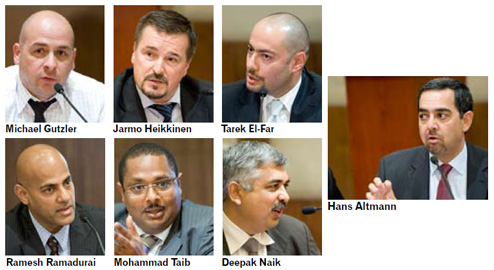Sub-metering was ignored in the beginning stages of district cooling in the region; most district cooling providers put bulk meters on buildings. Gradually, through a strong emphasis on the end user, the metering regimen is now being changed from bulk to individual meters. In this, the concluding part of the two-part report on DC Dialogue , we focus on metering and billing challenges.
Sub-metering was ignored in the beginning stages of district cooling in the region; most district cooling providers put bulk meters on buildings. Gradually, through a strong emphasis on the end user, the metering regimen is now being changed from bulk to individual meters. In this, the concluding part of the two-part report on DC Dialogue , we focus on metering and billing challenges.

The first part of the session on metering and billing challenges covered the technical aspects of metering. The participants discussed ultrasound and mechanical meters in detail. They reached a consensus that priority ought to be given to ultrasound meters. This type of meters won votes based on its higher precision and lower threshold and the non-requirement of straight-type run before and after the meter as well as the low maintenance and longevity, owing to the non-existence of mechanical parts.
|
Participants in the – Hans Altmann, Techem Moderator: |
The participants discussed the need to adapt the meter to the chilled water situation rather than the standard one for heating in Europe. A key challenge with ultrasound meters involves condensation, so design changes were necessary, the participants said. That said, considering the fact that two generations of the meters have been produced, reliability in performance in higher temperature and higher humidity conditions has improved by several notches, the participants agreed.
Participants also focused on different temperatures and BTU calculations and different types of communication. Some of the participants said that the most popular form of communication is radio communication, as is the case in Europe. In the UAE, which typically consists of many high-rise buildings, though, it is prudent to opt for a wired solution with a concentrator, they added. And from the building to the district cooling plant, it can be wired using fibre-optic cables, they further added.
The most interesting part of the discussion involved sharing the experience that Empower (close to 12,000 sub meters and 200 bulk meters) and Emicool (6,000 sub meters) have had with sub-metering. Empower has a call centre to deal with clients. As a result of the facility, the district cooling provider is closer to end-users, owing to the opportunity to regularly interact with them, said Ramesh Ramadurai. Empower receives at least 100 calls a day, Ramadurai revealed.
 The second part of the discussion was on how Empower absorbs end-user complaints and how it undertook an initiative to build awareness among customers on fixed charges and variable charges. The exercise was a challenge, Ramadurai said, but it helped in easing the situation.
The second part of the discussion was on how Empower absorbs end-user complaints and how it undertook an initiative to build awareness among customers on fixed charges and variable charges. The exercise was a challenge, Ramadurai said, but it helped in easing the situation.
During the time when the spotlight was firmly on him Ramadurai also spoke on tampering of meters. In the case of Empower, he said, tampering has been almost non-existent. “Even in the few cases of tampering, I would not say customers are deliberately doing it,” he said. “The workers may be doing it accidentally.” Tampering, he said, was not a major issue, though, in the sense that if a meter stops functioning, it will give a signal to the operator, and thus, the fault can be rectified.
Later, Mohammad Taib and Deepak Naik discussed various integration methods. A key question was, ‘Do you need to purchase only a meter or go to a service provider to establish a full solution, wherein you integrate and even provide bills?’ The core of the matter was, “Are service providers useful to district cooling utilities or not?” The consensus was that a service provider can provide much relief and that such a service can be outsourced.
The roundtable was well attended. Among the members of the audience were Barwa from Qatar, who are at a beginning stage, and Surouh, who have installed 1,000 meters.

|
Voices: If you supply the meter, who takes care of it? Asset management is important. We need a metering device to begin with. We then need to calibrate it correctly. And then, once you get the data, you have to read it correctly and analyse it. We then capitalise on the data. We get to benchmark and find out what is the solution. – Hans Altmann, Techem Cost allocation is governed by government regulation. It says that you don’t meter common areas. You take total cooling costs and, then, allocate it into variable and fixed costs. – Hans Altmann, Techem Ultrasound is definitely more accurate; mechanical is more durable. As long as the meter is providing good service, I couldn’t care less whether it is mechanical or ultrasound. – Tarek El-Far, Ista Seven to 15% of a building’s consumption is in the common area. – Tarek El-Far, Ista Since people are moving out and in more frequently, owing to better rents, there is a lot of registering and de-registering activity. We have 100 connections and disconnections every day. – Ramesh Ramadurai, Empower, Dubai There are legal issues involved in closing a valve. It is a police issue. – Hans Altmann, Techem (in response to a question regarding whether it was okay to close the connection for a defaulting end-user) The building capacity per square foot was 26 square metres/TR in the mid-1990s and 32 square metres/TR in the early 2000s; today, it is 40 square metres/TR. – Mohammed Taib, DC Pro Engineering |
Copyright © 2006-2025 - CPI Industry. All rights reserved.